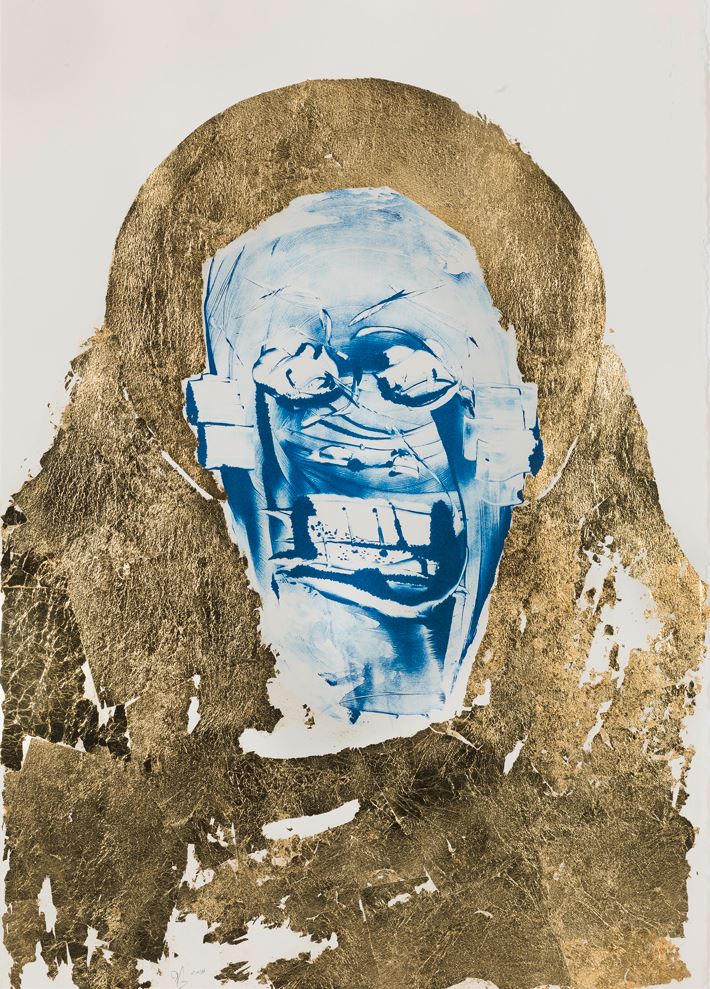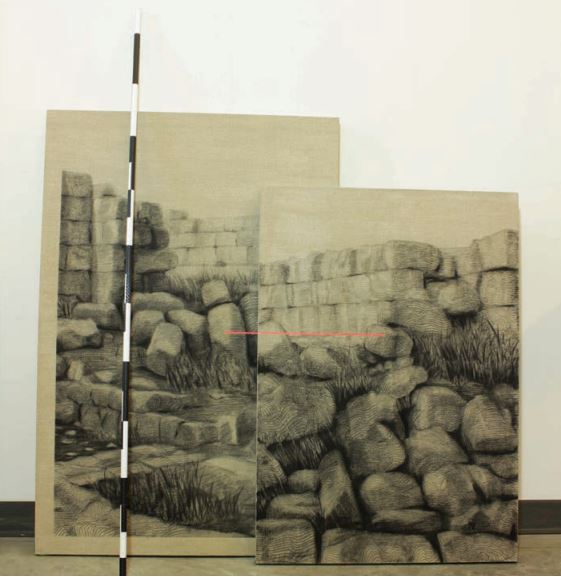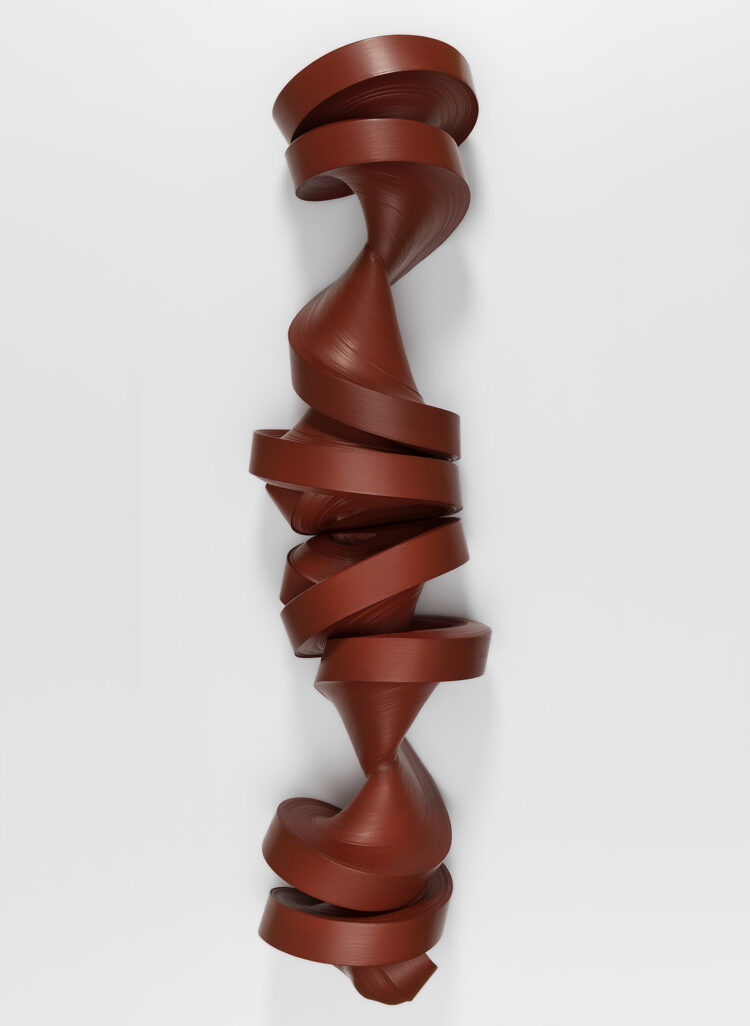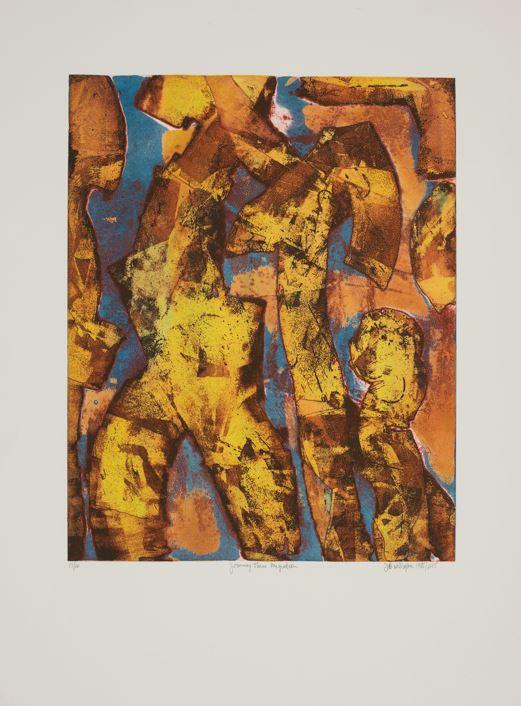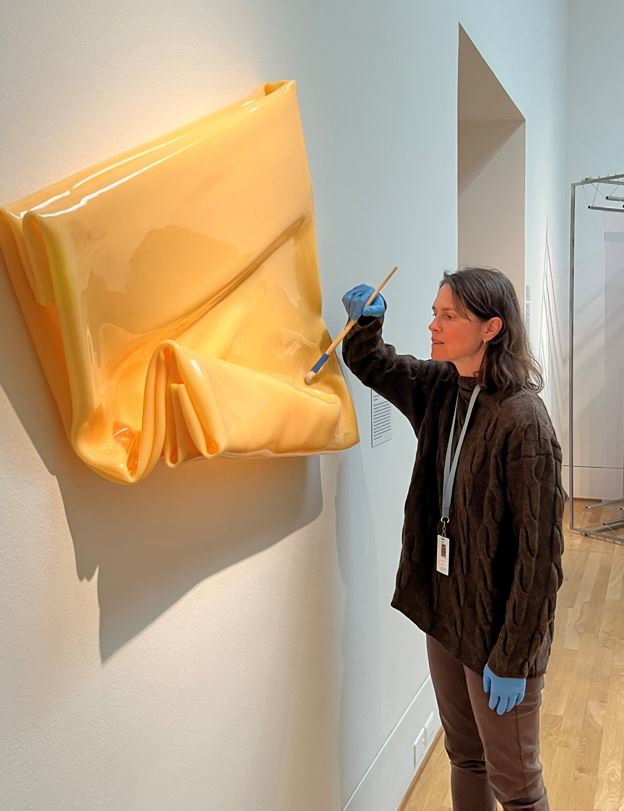
Simona Cristanetti, sculpture conservator, dusts Butterfly during the installation of the exhibition.
Mimi Herbert’s acrylic sculpture Butterfly, 2021, is among the works featured in Pour, Tear, Carve: Material Possibilities in the Collection. The fabrication process of this striking work intrigued museum staff. As part of an ongoing initiative to document the materials and techniques of works entering the collection, conservators and curators were pleased to conduct an interview with Herbert in January 2023. The interviews allow museum staff to learn more about the artists’ practice and assist conservators in developing plans for the care of works of art. The group was given a comprehensive tour through Herbert’s three-room studio and was introduced to her process, which included participating in the creation of a sculpture.
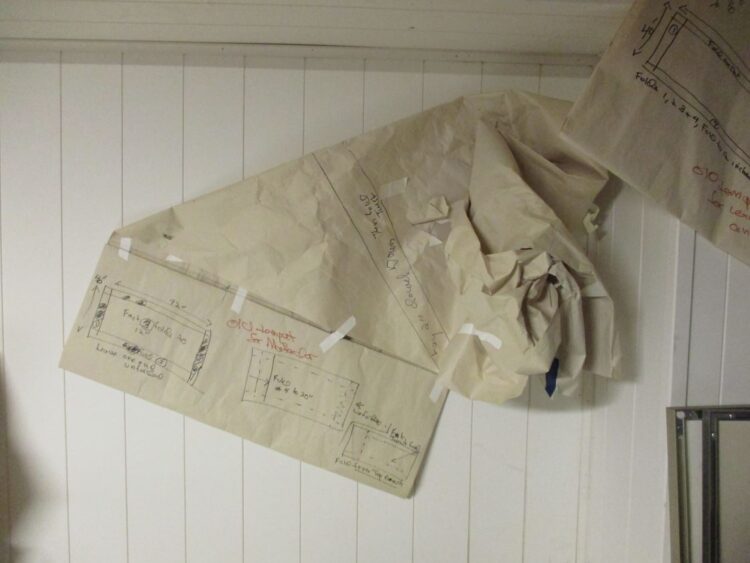
Paper maquette indicating dimensions and where folds will be made.
Herbert conceives her idea for a sculpture first by working with a paper maquette. During this phase, she determines the size of the sheet of acrylic that will be needed, and where the folds will be made.

Herbert with different colored sheets of acrylic against the wall that she obtains from a California supplier.
The acrylic is cut to the dimensions needed following the designs that she makes using the maquettes. The sheet is then laid on top of a custom-built table with a bank of heat lamps to soften different sections of the acrylic where she plans to make folds. Above, the right side of the orange piece of acrylic is being heated in order to be manipulated after becoming pliable.

Heating the acrylic sheet
Herbert observes the section of acrylic after being heated for a short time to see if it is malleable enough to fold. Phillips staff (left to right: curator Renee Maurer, conservator Lilli Steele, and curator Camille Brown) stand ready to assist the artist. Because of the intense light and heat, the artist and any assistants always wear dark goggles and heat resistant gloves for protection.

Moving the acrylic sheet
When the sheet is sufficiently softened, it is removed from the heat and placed on a worktable.

Folding the acrylic sheet
Herbert demonstrates how she makes the first fold, smoothing the heated edge of the acrylic with a soft cloth. The acrylic sheet cools and becomes unworkable in less than a minute so the artist and her assistants must work quickly.

Mimi Herbert, Durga Reclining, 2023
Several weeks later, the work that began with Phillips staff participation, entitled Durga Reclining, was completed by Herbert and her studio assistants. The painstaking complexity of her process can be fully appreciated after having followed her steps from inception of the piece through folding and manipulating the warmed acrylic sheets to arrive at beautiful abstract sculptures.


